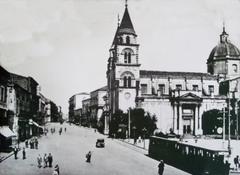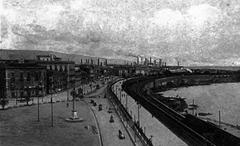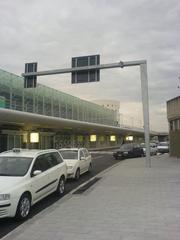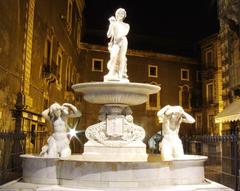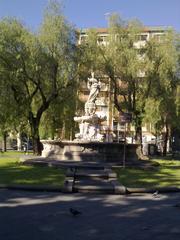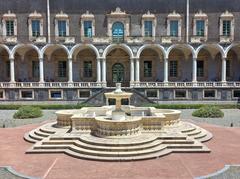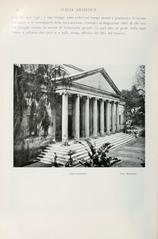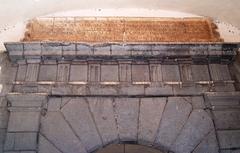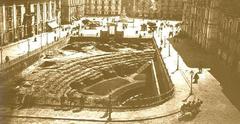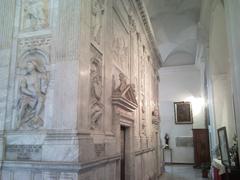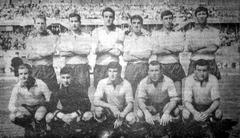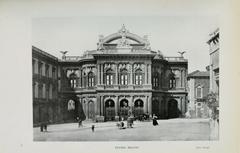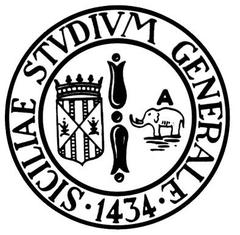Guide to Visiting Palazzo Biscari, Catania
Publication Date: 23/07/2024
Introduction
Palazzo Biscari is an architectural gem situated in the heart of Catania, Italy, epitomizing the splendor of Sicilian Baroque design. Constructed in the aftermath of the devastating 1693 earthquake, this palace stands as a testament to the resilience and grandeur of the Biscari family. The palace was commissioned by the Paternò Castello family and saw contributions from notable architects including Alonzo di Benedetto and Francesco Battaglia (Sicilian Places). Initially designed to withstand seismic activities, the palace’s architecture evolved over time, incorporating Baroque and later Rococo elements, particularly under the direction of Ignazio V, the 5th Prince of Biscari, who was a noted patron of the arts and an avid collector of antiquities (Italian Art).
The significance of Palazzo Biscari extends beyond its architectural marvels. Throughout its history, it has hosted illustrious guests such as Johann Wolfgang von Goethe and served as a venue for numerous cultural and social events (Goethe’s Travels). Today, it remains a privately-owned residence but is open to the public for guided tours and special events, offering visitors a glimpse into its opulent rooms, intricate frescoes, and the storied legacy of the Biscari family (Visit Catania).
This comprehensive guide aims to equip potential visitors with essential information about Palazzo Biscari, including its history, architectural significance, visitor tips, and nearby attractions. Whether you are a history enthusiast, an art lover, or a curious traveler, this guide will help you make the most of your visit to one of Catania’s most treasured historical sites.
Contents
- Introduction
- History of Palazzo Biscari
- Origins and Construction
- Architectural Evolution
- Expansion and Enhancements
- The Biscari Museum
- Historical Events and Guests
- The 19th and 20th Centuries
- Modern-Day Significance
- Visitor Information
- Ticket Prices
- Opening Hours
- Travel Tips
- Nearby Attractions
- Accessibility
- Special Events and Guided Tours
- Special Events
- Guided Tours
- Photographic Spots
- Preservation Efforts
- Restoration Projects
- Cultural Impact
- Influence on Art and Media
- Educational Programs
- Future Prospects
- FAQ
- Conclusion
History of Palazzo Biscari
Origins and Construction
Palazzo Biscari, located in Catania, Italy, began construction in the late 17th century after the 1693 earthquake that devastated much of the city. Commissioned by the prominent Biscari family, the initial construction was overseen by Ignazio Paternò Castello, the 3rd Prince of Biscari, aiming to reflect the family’s status and wealth (Sicilian Places).
Architectural Evolution
The palace’s design evolved over several decades, focusing initially on creating a robust structure to withstand seismic activities. Alonzo di Benedetto, the main architect, incorporated Baroque elements such as intricate stucco work, grand staircases, and elaborate frescoes (Catania Heritage).
Expansion and Enhancements
In the 18th century, Ignazio V, the 5th Prince of Biscari, expanded the palace significantly. A patron of the arts and an antiquities collector, he commissioned architect Francesco Battaglia to add Rococo elements, including ornate mirrors, gilded stucco, and mythological frescoes (Italian Art).
The Biscari Museum
Ignazio V’s passion for antiquities led to the creation of the Biscari Museum within the palace, housing Greek and Roman sculptures, ancient pottery, and numismatic collections. It became one of Sicily’s first private museums, attracting scholars and art enthusiasts from across Europe (Museums of Sicily).
Historical Events and Guests
The palace has hosted numerous historical events and illustrious guests, including Johann Wolfgang von Goethe in 1787. Goethe documented his admiration for the palace’s grandeur and the Biscari family’s hospitality in his travel writings. The palace has also been a venue for lavish balls, concerts, and social gatherings (Goethe’s Travels).
The 19th and 20th Centuries
Despite socio-political changes in Italy, the Biscari family maintained the palace’s grandeur through the 19th and 20th centuries. The palace survived the Napoleonic Wars, Italy’s unification, and World War II with minor damages that were promptly restored (Italian History).
Modern-Day Significance
Today, Palazzo Biscari remains a privately-owned residence but is open to the public for guided tours and special events. Visitors can explore the opulent rooms, admire the intricate frescoes, and learn about the Biscari family’s legacy (Visit Catania).
Visitor Information
Ticket Prices
Tickets for Palazzo Biscari can be purchased at the entrance or online. Prices vary depending on the type of tour and any special events taking place. For the latest ticket prices, please visit the official website.
Opening Hours
The palace is open for guided tours from Monday to Saturday, from 10:00 AM to 1:00 PM and 3:00 PM to 6:00 PM. It is advisable to check the official website for any changes in hours or special closures.
Travel Tips
Visitors are encouraged to wear comfortable shoes, as the tour involves walking through various rooms and gardens. Photography is allowed in most areas, but flash is prohibited to protect the artworks.
Nearby Attractions
Palazzo Biscari is conveniently located near other historical sites such as the Catania Cathedral and the Ursino Castle, making it easy to plan a full day of exploration in Catania.
Accessibility
The palace strives to be accessible to all visitors. There are ramps and elevators available for those with mobility issues. It’s recommended to contact the palace in advance to arrange any specific accessibility needs.
Special Events and Guided Tours
Special Events
Palazzo Biscari hosts various cultural events, including concerts, art exhibitions, and literary gatherings. These events continue the palace’s tradition as a center of art and culture.
Guided Tours
Guided tours are available in multiple languages and provide in-depth information about the palace’s history, architecture, and the Biscari family’s legacy. Private tours can also be arranged for a more personalized experience.
Photographic Spots
The palace offers numerous photographic opportunities, from its grand staircases and opulent rooms to the beautifully landscaped gardens. It is a popular location for professional photo shoots and film productions.
Preservation Efforts
Restoration Projects
Ongoing preservation efforts are crucial to maintaining Palazzo Biscari’s historical and architectural integrity. The Biscari family, along with local heritage organizations, undertake regular maintenance and restoration projects, including fresco restoration and structural repairs (Heritage Preservation).
Cultural Impact
Influence on Art and Media
Palazzo Biscari has inspired numerous artists, writers, and filmmakers. Its opulent interiors and historical ambiance make it a sought-after location for film shoots and photo sessions. The palace’s rich history continues to captivate visitors and scholars alike (Cultural Impact).
Educational Programs
Palazzo Biscari offers educational programs that promote the study of art, history, and architecture. These programs include guided tours for school groups, workshops on Baroque art, and lectures by historians and art experts (Educational Programs).
Future Prospects
Looking ahead, Palazzo Biscari aims to continue its role as a cultural and historical landmark. Ongoing preservation efforts and active engagement in cultural and educational activities ensure that it remains a vibrant part of Catania’s heritage (Future Prospects).
FAQ
What are the visiting hours for Palazzo Biscari?
The palace is open for guided tours from Monday to Saturday, from 10:00 AM to 1:00 PM and 3:00 PM to 6:00 PM.
How much are tickets?
Ticket prices vary depending on the type of tour and any special events. It’s best to check the official website for the most current pricing.
Is the palace accessible for visitors with mobility issues?
Yes, the palace has ramps and elevators. It’s recommended to contact the palace in advance to arrange specific accessibility needs.
Can I take photos inside Palazzo Biscari?
Yes, photography is allowed in most areas, but flash is prohibited to protect the artworks.
Conclusion
Palazzo Biscari is a testament to Catania’s rich history and enduring legacy. Whether you’re a history enthusiast, an art lover, or simply a curious traveler, a visit to this stunning palace is sure to be a memorable experience. Don’t miss the chance to explore this magnificent site and immerse yourself in its cultural heritage.
References
- Sicilian Places. Retrieved from https://www.sicilianplaces.co.uk
- Catania Heritage. Retrieved from https://www.cataniaheritage.it
- Italian Art. Retrieved from https://www.italianart.com
- Museums of Sicily. Retrieved from https://www.museumsofsicily.it
- Goethe’s Travels. Retrieved from https://www.goethetravels.com
- Italian History. Retrieved from https://www.italianhistory.it
- Visit Catania. Retrieved from https://www.visitcatania.it
- Heritage Preservation. Retrieved from https://www.heritagepreservation.it
- Cultural Impact. Retrieved from https://www.culturalimpact.it
- Educational Programs. Retrieved from https://www.educationalprograms.it
- Future Prospects. Retrieved from https://www.futureprospects.it
